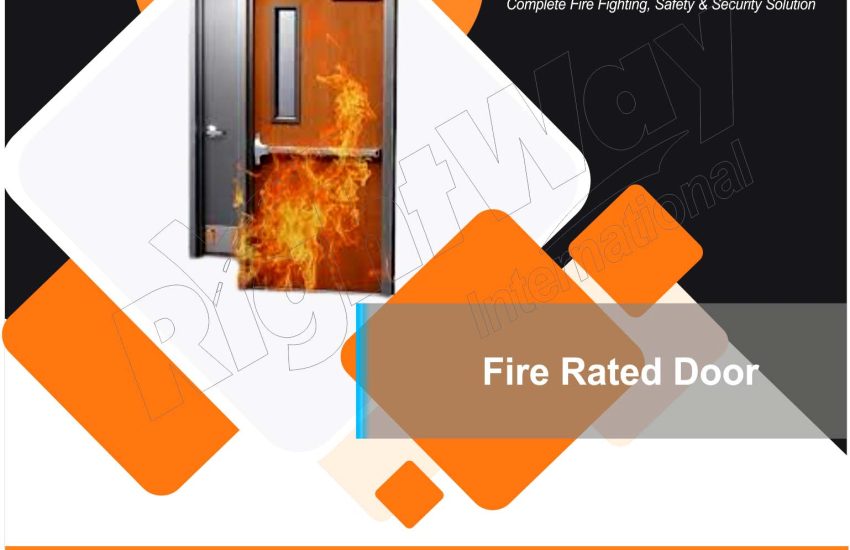Fire Rated Door are crucial components in building safety systems, designed to slow the spread of fire and smoke, and provide a safe passage for evacuation. These doors are engineered to resist the passage of fire and smoke for a specified period, helping to protect building occupants and property. This article explores the significance of fire rated doors, the different types available, and best practices for their installation and maintenance.
Importance of Fire Rated Doors
- Containment of Fire and Smoke: Fire rated doors help contain the spread of fire and smoke within specific areas of a building. By doing so, they prevent the fire from spreading quickly and allow more time for occupants to evacuate and for emergency responders to arrive.
- Protection of Escape Routes: These doors are often used to protect stairwells, corridors, and other critical escape routes. By maintaining a safe passage, fire rated doors ensure that building occupants can exit safely during an emergency.
- Compliance with Building Codes: Fire rated doors are a requirement in many building codes and regulations. Compliance with these standards is essential for ensuring the safety of occupants and for meeting legal obligations.
- Enhancing Structural Integrity: Fire rated doors help to maintain the structural integrity of fire-resistance-rated walls and compartments, ensuring that fire-resistant barriers remain effective for their intended duration.
Types of Fire Rated Doors
- Wood Fire Rated Doors: These doors are made from solid or core-constructed wood and are designed to resist fire for a specified period, typically ranging from 20 to 90 minutes. They are commonly used in residential and commercial buildings.
- Steel Fire Rated Doors: Constructed from metal, steel fire rated doors offer higher levels of fire resistance and durability compared to wood doors. They are suitable for high-traffic areas and locations where additional protection is needed.
- Glass Fire Rated Doors: These doors incorporate fire-resistant glass, which allows visibility while providing fire protection. They are often used in areas where maintaining visibility and aesthetics is important, such as office spaces and lobbies.
- Composite Fire Rated Doors: Made from a combination of materials, composite fire rated doors offer a balance of fire resistance, strength, and aesthetics. They can be customized to meet specific design requirements while providing effective fire protection.
Key Features of Fire Rated Doors
- Fire Resistance Rating: Fire rated doors are assigned a fire resistance rating based on their ability to withstand fire for a specific period, usually measured in minutes. Common ratings include 20, 45, 60, and 90 minutes.
- Intumescent Seals: These seals expand when exposed to heat, filling gaps around the door and frame to prevent the passage of smoke and flames. Intumescent seals enhance the fire performance of the door.
- Fire Rated Frames and Hardware: The door frame and hardware (such as hinges, locks, and closers) must also be fire rated to ensure the entire assembly performs as intended. Non-rated components can compromise the effectiveness of the fire rated door.
- Self-Closing Mechanism: Fire rated doors are often equipped with self-closing mechanisms to ensure that the door remains closed when not in use. This feature is crucial for maintaining fire barriers and preventing smoke spread.
Installation Best Practices
- Adhere to Building Codes: Ensure that fire rated doors meet local building codes and fire safety regulations. Installation should comply with the standards set by organizations such as the National Fire Protection Association (NFPA) and Underwriters Laboratories (UL).
- Professional Installation: Engage certified professionals for the installation of fire rated doors. Proper installation is critical to ensuring that the door functions correctly in a fire scenario.
- Correct Door and Frame Fit: Ensure that the door fits properly within the frame and that there are no gaps that could compromise its fire resistance. The door and frame should be aligned correctly and securely installed.
- Regular Maintenance and Inspections: Conduct regular inspections and maintenance of fire rated doors to ensure they remain in good working condition. Check for proper operation of self-closing mechanisms, seals, and hardware.
- Do Not Alter or Block: Avoid altering or blocking fire rated doors. Modifications can affect the door’s fire resistance and performance. Ensure that doors are not obstructed and that their operation is not hindered by nearby objects.
Conclusion
Fire rated doors are essential for maintaining safety in buildings by containing fire and smoke, protecting escape routes, and ensuring compliance with safety regulations. Understanding the different types of fire rated doors, their key features, and best practices for installation and maintenance is crucial for maximizing their effectiveness. By adhering to these guidelines, property owners and managers can help safeguard occupants and ensure that fire safety systems function as intended during emergencies.


